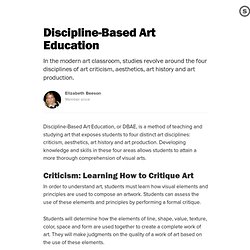

Incredible Art Department. K-12 Education & Learning Innovations with Proven Strategies that Work. Mother of All Art and Art History Links Pages. ArtEdSearch Home. Dawn's Brain – The adventures of a high school web design and graphic design teacher. » Blog Archive » One-point perspective worksheets. Below are worksheets I created in Adobe Illustrator for teaching one-point perspective.

Walk your students through the first two (boxes and room.) Show them the techniques used since the Renaissance to create a realistic illusion of space and form. First introduce them to the terms “horizon line”, “vanishing point” and “orthogonal line”. Horizon Line: The line in a perspective drawing where the sky meets the ground. It also represents the viewer’s eye level. A couple of technique details, along with further resources: When drawing the back edges of the boxes in the first worksheet, the artist lines the ruler up with a front edge, then slides the ruler toward the vanishing point a little ways, without twisting the ruler in any way. Once you walk the students through the first two worksheets below, they should be able to do the others on their own with a little guidance. Going through all four worksheets took me two class periods of 50 minutes each. Grid Drawing- Use a Grid to Draw. By Matt Fussell The grid technique is a method used to create accurate drawings from photos.

Sometimes when we, as artists, are creating drawings and paintings, the need arises for accuracy. The grid technique is a great "tried and true" method to create accurate drawings from photos. It is used by many portrait artists and illustrators and can actually help you improve your observation skills. And improving your observation skills will result in improved drawing skills. Here's a break down of how the process works. First you'll need a photo. Now you will draw a grid that is proportional to the grid on your photo on your drawing surface.
Next, draw what shapes, lines, and values that you see in each square on the photo to the corresponding square on the drawing surface. Here are some more art lessons that you may like... Spiral Art Education / Home. World Myths and Legends in Art (Minneapolis Institute of Arts) Concordia University Chicago - Art Lessons.
Discipline-Based Art Education: Teaching Criticism, Aesthetics, Art History and Art Production. Discipline-Based Art Education, or DBAE, is a method of teaching and studying art that exposes students to four distinct art disciplines: criticism, aesthetics, art history and art production.

Developing knowledge and skills in these four areas allows students to attain a more thorough comprehension of visual arts. Criticism: Learning How to Critique Art In order to understand art, students must learn how visual elements and principles are used to compose an artwork. Students can assess the use of these elements and principles by performing a formal critique. Students will determine how the elements of line, shape, value, texture, color, space and form are used together to create a complete work of art. Students will also learn about the art principles of balance, emphasis, variety, harmony, movement, proportion, unity and rhythm. Aesthetics: Questioning Art The discipline of aesthetics challenges students to ask key philosophical questions about art. Well-Rounded Art Studies. Art Education 2.0 - Using New Technology in Art Classrooms. ArtLex Art Dictionary.
Middle School Art.